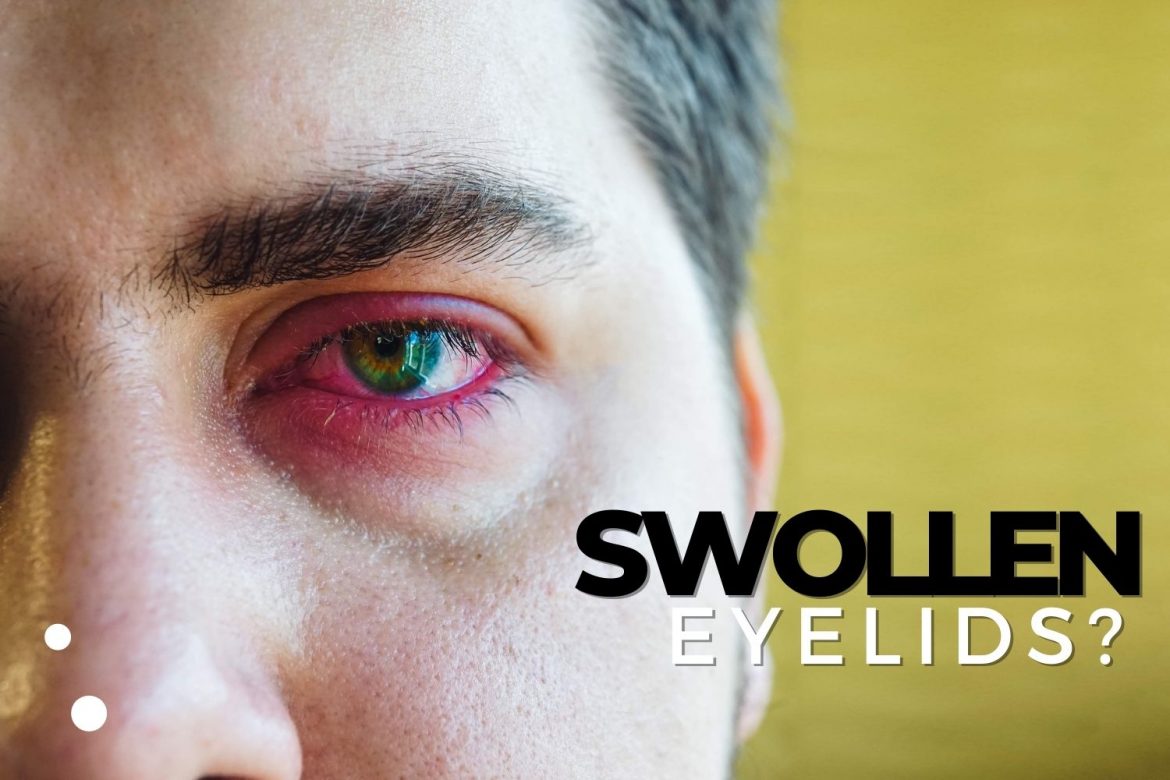4072 total views , 166 views today
Tired of waking up with puffy or swollen eyelids? Often, the terms “puffy eyelid” and “swollen eyelid” are used interchangeably, but they are different.
While puffy eyelids may be a cosmetic nuisance, they are usually harmless and often the result of fluid retention overnight. Swollen eyelids are caused by an inflammatory response to an allergen, infection, or injury.
There are a number of common causes for swollen eyelids—some more serious than others.
What causes swollen eyelids?
1. Stye
A stye (hordeolum) is an infection in one of the secreting glands in your eyelid. The first indication of a stye is a red, painful, swollen lump on the eyelid near the base of an eyelash. A whitehead (like a pimple) will usually form on the surface of the lump after a couple of days.
Applying warm compresses will soothe the pain and encourage the stye to expel any trapped inflammatory fluid. Sometimes a short course of antibiotics will be prescribed by your doctor—especially if you have multiple styes and your vision is impaired.
2. Chalazion
A chalazion resembles a stye but rather than an active infection, it is a blocked oil gland in your eyelid. Not often painful or red, it presents as a bump on your eyelid. With warm compresses, you will often be able to express the lump. When the chalazion is very large it can interfere with your vision and start to become painful when you blink. Contact your eye doctor if the bump does not resolve, or you have signs of an infection, like fever or significant redness and pain.
3. Makeup
Always be sure to thoroughly remove your makeup before bed. Sleeping in eye makeup can result in a skin irritation known as contact dermatitis and lead to red, swollen eyelids.
4. Allergies
Allergies can be a real pain for many people. Dust, pollen, and other common allergens irritate some people making their eyes stream and trigger sneezing fits! Red, itchy watery eyes and swollen eyelids are all telltale signs of an allergic reaction. Avoiding the allergen is your best line of defense but you can also get relief from oral antihistamines and eye drops.
5. Orbital cellulitis
Orbital cellulitis is an ocular emergency! It is an infection that begins deep inside the tissue of the eyelid and can spread quickly. It is extremely painful and can occur when you have a tiny cut and bacteria infiltrates into the wound. Cellulitis requires antibiotic treatment immediately and depending on the severity of the infection, it may even be necessary to receive intravenous (IV) antibiotics. Seek urgent medical care.
6. Blepharitis
Blepharitis is an inflammation of the lid margins around the base of your eyelashes. Bacteria causes oily eyelids and dandruff flakes around the eyelashes. Sometimes it can be very painful and red. Warm compresses and daily medicated eyelid wipes will alleviate your symptoms and your eye doctor can also prescribe an antibiotic or anti-inflammatory eye ointment.
7. Pink eye
Conjunctivitis (pink eye) causes your eye to become red, painful, and itchy and your eyelids can become swollen. Conjunctivitis is usually caused by a viral infection and will clear up on its own in 10-14 days, but lubricant eyedrops will soothe your eye. In some cases, a bacterial infection is the culprit and an antibiotic eyedrop will be prescribed to settle your symptoms.
8. Blocked tear duct
Your tear duct is designed to drain away tears from the surface of your eye. When the duct becomes blocked, the tears will not drain effectively, and it can become infected and cause swollen eyelids. Gentle massage may help to relieve the blockage, but if your eye or eyelid becomes painful, and you develop a fever you should see your eye doctor promptly. If the blockage does not clear with a course of antibiotics, your eye doctor may need to perform a procedure to manually open the tear duct.
9. Graves’ disease
Graves’ disease is an immune system disorder that occurs with an overactive thyroid. The thyroid is triggered to release cells into the eyelid to fight a nonexistent infection, causing swelling and inflammation in the eye and eyelids. Your eye doctor will discuss the management of Graves’ eye disease with you to address your symptoms.
What causes puffy eyelids?
You may wake with puffy eyelids after a poor night’s sleep. Water retention overnight and lying flat on your back or face down may cause fluids to pool and settle around your cheeks and eyes. Overconsumption of salt, prolonged crying, sinus problems, and aging can also cause fluid retention in your eyelids.
A cold compress over your closed eyelids will help to reduce the puffiness. Rest, elevating your head a little overnight, and drinking plenty of water will also help. Unfortunately, puffy eyelids can be genetically inherited and cosmetic eyelid surgery known as blepharoplasty is required.
Managing your swollen or puffy eyelids
- Get tested for allergies
- Choose beauty products that are hypoallergenic to avoid allergy flare-ups
- Reduce salt consumption
- Get a good night’s sleep
- Use warm compresses if you suspect a stye or chalazion
- Use cool compresses when you are suffering from allergies of puffy eyelids
- Adequately hydrate
Puffy eyelids are not an emergency, but they can be mistaken for swollen eyelids, which may be more serious. If your symptoms don’t improve in a few days, be sure to call on your eye doctor for advice.


